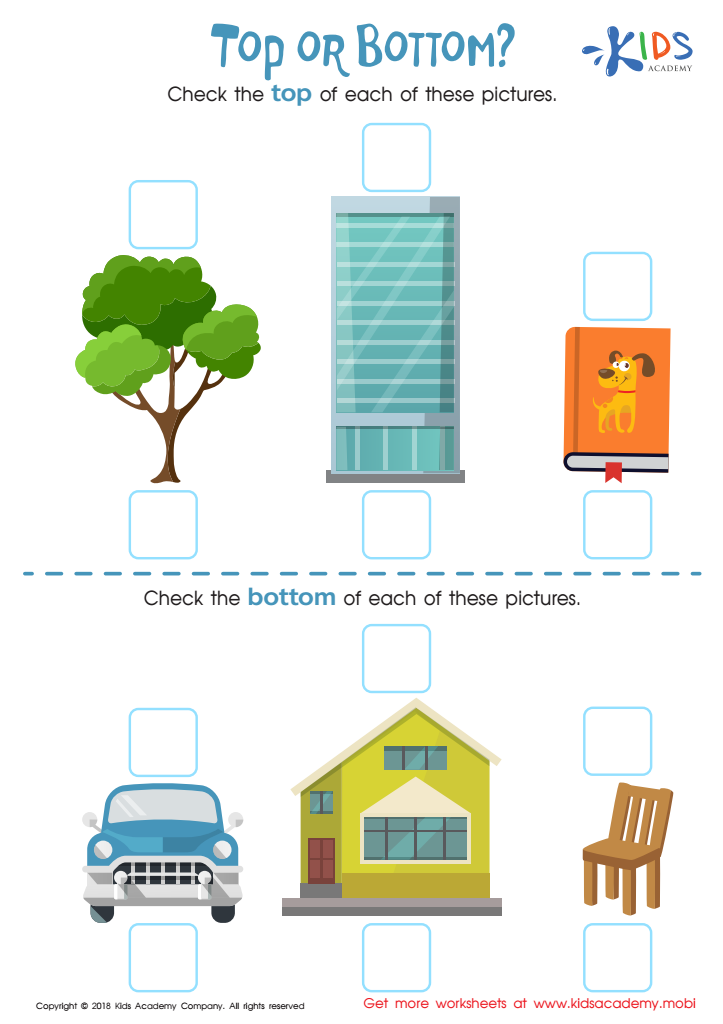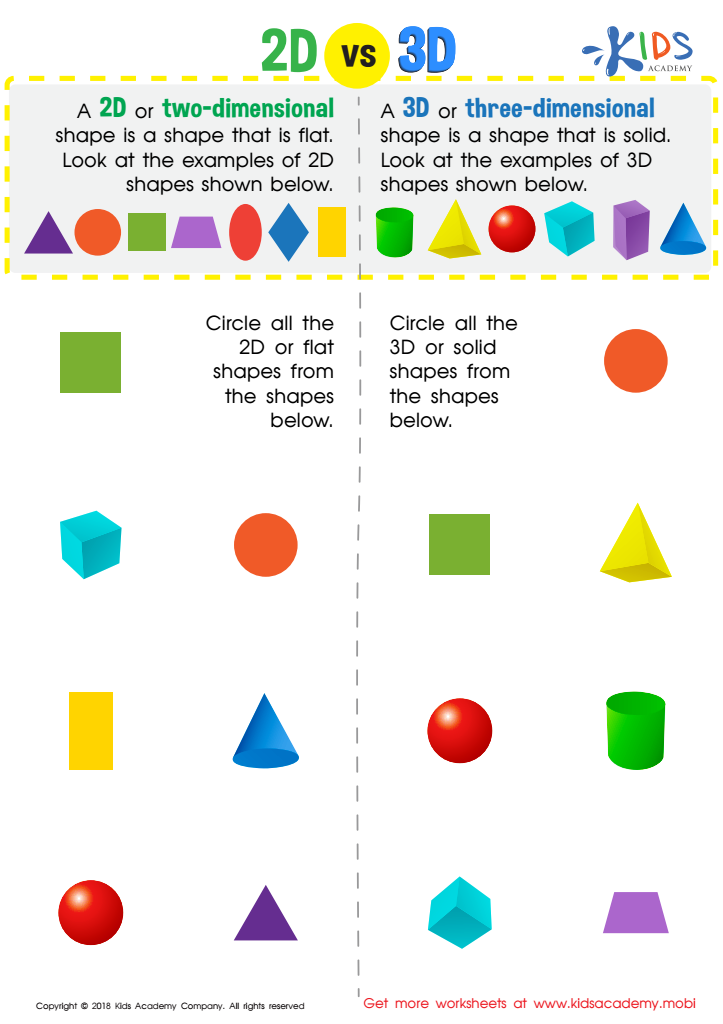Visual perception Normal Geometry Worksheets for 4-Year-Olds
3 filtered results
-
From - To
Introducing the "Visual Perception Normal Geometry Worksheets for 4-Year-Olds" designed to nurture early learning and cognitive development. These printable worksheets blend fun with learning, promoting recognition of shapes, patterns, and spatial awareness. Through engaging activities, children enhance their visual perception skills crucial for reading and math readiness. Tailored for preschoolers, the worksheets are colorful, easy to navigate, and foster essential geometry skills. Perfect for both classroom use and home practice, these tools support toddlers in building a strong foundation in early math concepts. Download now to unlock your child's potential through creative and structured learning exercises.


Top or Bottom Worksheet


Preschool Geometry Match Up Worksheet


2D vs 3D Shapes Worksheet
Visual perception in normal geometry for 4-year-olds is essential for several developmental reasons and demands the attention of parents and teachers alike. At this stage, children are rapidly developing cognitive skills, and their ability to interpret and understand shapes, spatial relationships, and patterns forms a crucial part of this growth. Visual perception skills enhance a child's spatial awareness and ensure that they can comprehend the relative position of objects around them.
Fostering these skills early on helps with reading readiness, as visual discrimination of shapes and letters is crucial for literacy. A child who understands geometric concepts can also relate this knowledge to everyday tasks, such as sorting objects, solving puzzles, and taking part in simple math activities, which are foundational for more complex problem-solving skills later in life.
Moreover, engaging in activities that hone visual perception — such as building blocks, drawing, and identifying patterns — greatly improves fine motor skills and hand-eye coordination. It also stimulates brain development, promoting critical thinking and creativity.
In summary, prioritizing visual perception of normal geometry equips children with sheer readiness for academic tasks, sharper motor skills, and enhanced cognitive faster and more effectively. Therefore, parents and teachers should actively support activities that develop these crucial early learning competencies.
 Assign to My Students
Assign to My Students
















